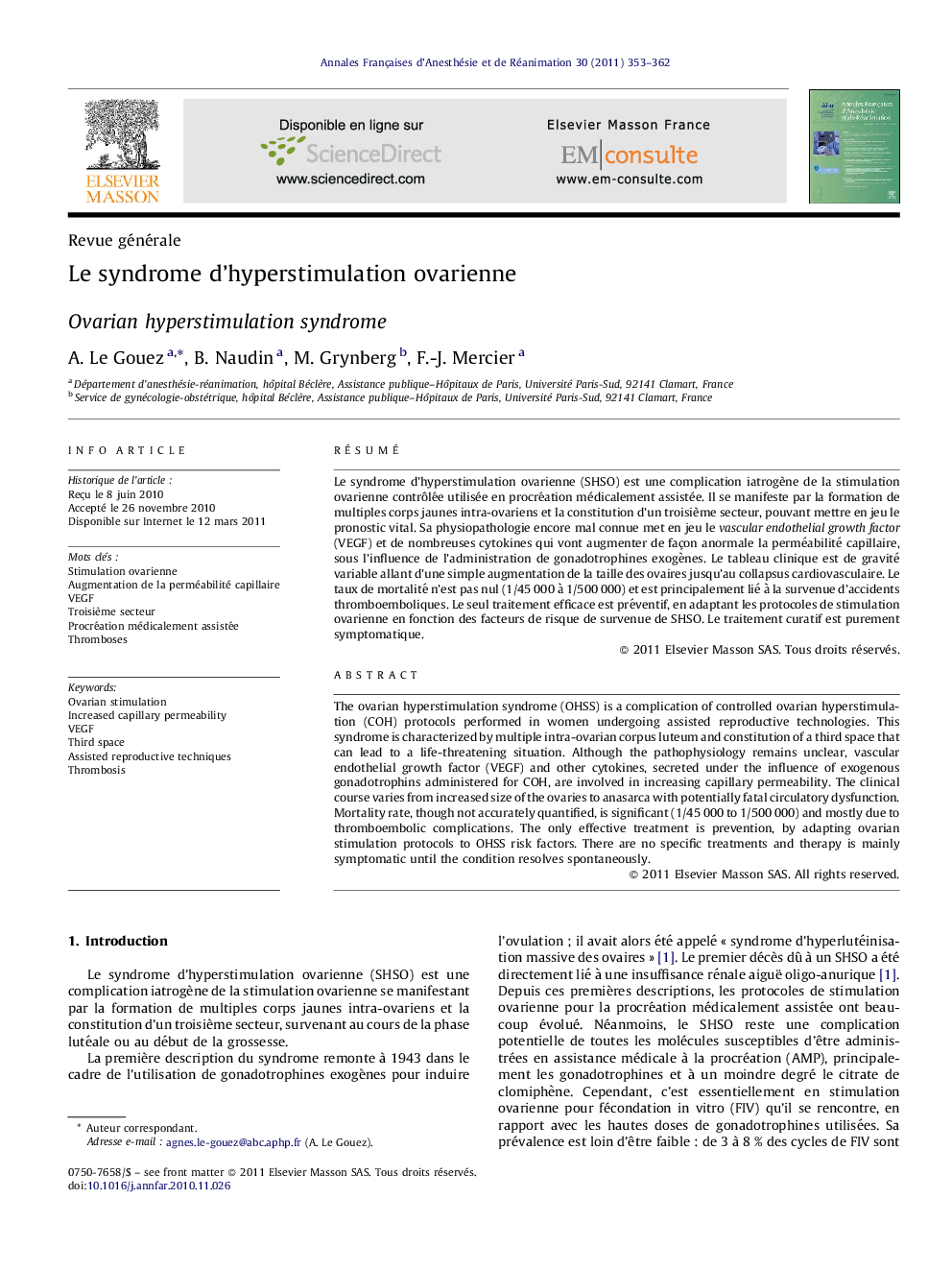| Article ID | Journal | Published Year | Pages | File Type |
|---|---|---|---|---|
| 2746566 | Annales Françaises d'Anesthésie et de Réanimation | 2011 | 10 Pages |
RésuméLe syndrome d’hyperstimulation ovarienne (SHSO) est une complication iatrogène de la stimulation ovarienne contrôlée utilisée en procréation médicalement assistée. Il se manifeste par la formation de multiples corps jaunes intra-ovariens et la constitution d’un troisième secteur, pouvant mettre en jeu le pronostic vital. Sa physiopathologie encore mal connue met en jeu le vascular endothelial growth factor (VEGF) et de nombreuses cytokines qui vont augmenter de façon anormale la perméabilité capillaire, sous l’influence de l’administration de gonadotrophines exogènes. Le tableau clinique est de gravité variable allant d’une simple augmentation de la taille des ovaires jusqu’au collapsus cardiovasculaire. Le taux de mortalité n’est pas nul (1/45 000 à 1/500 000) et est principalement lié à la survenue d’accidents thromboemboliques. Le seul traitement efficace est préventif, en adaptant les protocoles de stimulation ovarienne en fonction des facteurs de risque de survenue de SHSO. Le traitement curatif est purement symptomatique.
The ovarian hyperstimulation syndrome (OHSS) is a complication of controlled ovarian hyperstimulation (COH) protocols performed in women undergoing assisted reproductive technologies. This syndrome is characterized by multiple intra-ovarian corpus luteum and constitution of a third space that can lead to a life-threatening situation. Although the pathophysiology remains unclear, vascular endothelial growth factor (VEGF) and other cytokines, secreted under the influence of exogenous gonadotrophins administered for COH, are involved in increasing capillary permeability. The clinical course varies from increased size of the ovaries to anasarca with potentially fatal circulatory dysfunction. Mortality rate, though not accurately quantified, is significant (1/45 000 to 1/500 000) and mostly due to thromboembolic complications. The only effective treatment is prevention, by adapting ovarian stimulation protocols to OHSS risk factors. There are no specific treatments and therapy is mainly symptomatic until the condition resolves spontaneously.
